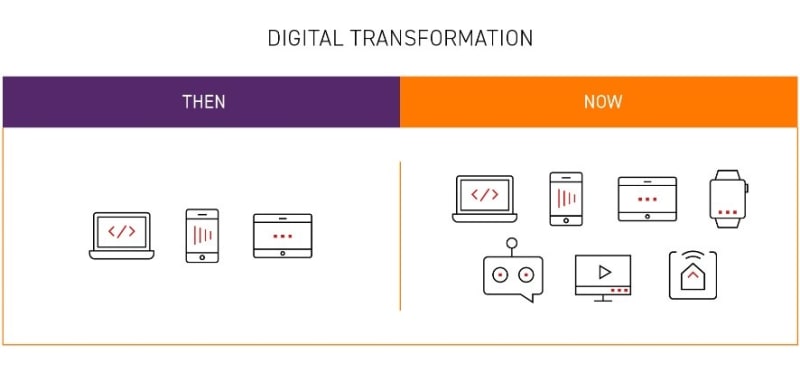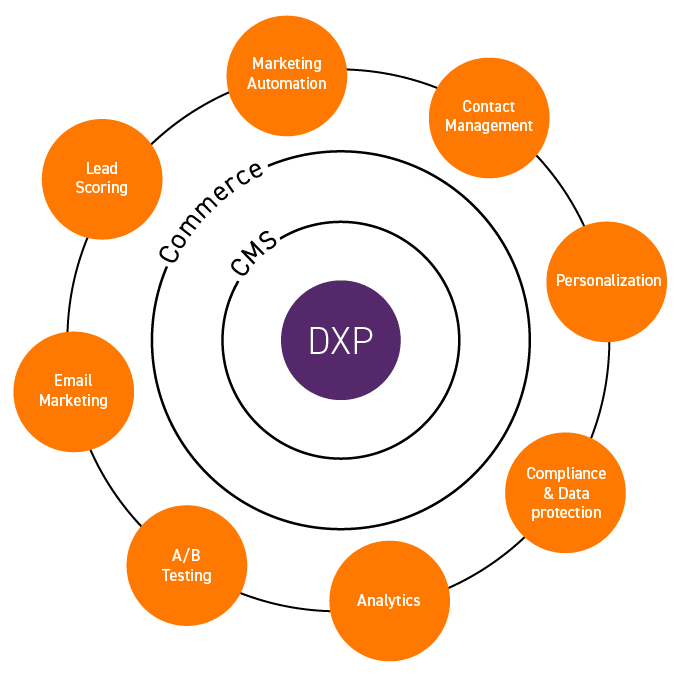Cross-channel, multi-channel, omnichannel… if you’ve been in the marketing or customer engagement business long enough, the “somethingsomethingchannel” concept starts to become a bit of a blur.
Yet it’s still an important concept. After all, modern data in the US suggests the average consumer has access to 10 or more devices. While there are key leaders—laptops and smartphones being the obvious answers—are we looking at the wider range of possibilities, in terms of both marketing and general business presence?
What’s more, are we making the most of these opportunities and meeting customer expectations? We’re not asking if the omnichannel experience is necessary—we’re asking if its enough.
The missed goal of omnichannel experience.
Omnichannel literally means to “be on every channel” but that often misses the actual point. Today’s omnichannel experience also needs to be consistent.
Yet this is often something we’re already doing on the marketing side. If it’s connected to the internet, we’ve got the means to advertise or be present. But not every business is able to deliver those promises made on the respective channels they’re promoting on.
In many sectors, marketing teams are active, but the actual service or product is not. Omnichannel is a response to the digital transformation of the customer, yet we’re still often falling short.

Updating the omnichannel strategy.
Yet you can’t just simply shove or push your business onto any and every channel. That’s where some early attempts have gone wrong. What works for desktops doesn’t work for mobile, and what works for those won’t necessarily work for the wider range of IoT.
Instead, let’s take a leaf out of the multiexperience strategy, which is essentially Omnichannel 1.1 in its core principles. This approach states that we have an underlying architecture, but completely customized frontend experiences that make the most of each channel—and this gives us something new. It gives us consistency.
By shifting the focus to quality over quantity, we gain some immediate benefits:
- Higher Customer Lifetime Values. Let’s start with the biggest. When every experience is pushed to its best, you’re more likely to please the customer, wherever they are. This leads to more conversions and a more dedicated, loyal customer base.
- Higher Customer Retention & Loyalty. When you’re offering the best experience on each platform, you’re removing opportunities for both potential and existing customers to switch to the competitor.
- Better Brand Experience. All of the above points translate to a better experience whenever someone interacts with your company. Regardless of the device, they’ll know and trust your brand to deliver.
These aren’t hypothetical concepts, either. A study as far back as 2017 already showed that omnichannel customers are 23% more likely to spend more.
But there’s also one more benefit to discuss on the strategic level. It’s not just about making extra revenue.
Tracking the full customer journey.
When done right, the omnichannel strategy keeps enough information connected in the backend to better track individuals across all devices—the full customer view. And more consistent data always means a more consistent strategy.
In the backend, we can better identify real customer issues. Where are they engaging the most—and least? Which areas are holding their own and which touchpoints need more improvement? What are the most common entry points?
From this analysis, we can do a number of things:
- Inform our marketing activities on what and where to promote.
- Adjust the budget to reflect the wider customer usage, remove ineffective overheads and increase conversions.
- Offer a more personalized experience—i.e, omnichannel marketing. This is also in many ways an extension of the halo effect we already implement in SEO and PPC marketing efforts. What’s more, 71% of modern consumers expect it.
The best omnichannel customer experience examples.
Just to prove that this isn’t all hypothetical nonsense, we can already see many big brands adapting to the omnichannel customer experience.
For example, earlier we said that the average individual has 10 or more devices. Well, Domino’s has 11 different ways to order pizza, so they’ve every much got their customers covered. The “anyware” system covers both different devices and even online channels, such as social media and slack.
Netflix is another “classic example”. Being able to stop and start programs from different channels and have the platform save your progress greatly improves the customer experience. And it’s available on pretty much any device you can think of… as long as it has a screen.
And for a more unusual outlier, we can also consider Starbucks. After all, discounts and offers are stored on the phone app, but this can also be accessed via desktop devices. This seems counter-intuitive—it’s a little cumbersome to take your laptop to the cashier—until you consider the in-store Wi-Fi. Happy coffee consumers need to register to use the wi-fi, but this also opens a path to offers, rewards programs and the wider marketing material. Customers who register on their laptops get emails about offers and are then incentivized to use the app.
What can we learn from this?
So what can we learn from these companies, since they’ve gone to great lengths to implement such an omnichannel brand experience? While every business has different needs, we can easily identify a few underlying threads:
- Design for the journey. Customer experience is a multistage, multidevice process, so we shouldn’t be designing each channel in a vacuum. We need to consider how they’re connected, how we can use data to feed marketing from one channel to the next.
- Enable freedom of choice. Where possible, each channel should provide as many services as possible, when possible—there’s a reason Netflix isn’t on Alexa. Users that feel more comfortable with certain devices will make their own choices.
- Incentivize! Other than directly advertising a new app, how are you going to get existing customers to jump in? Incentives are key in all omnichannel strategies. We want users to be willing to try. And a little incentive now and then has always worked for business, so we shouldn’t shy away from it here.
- Connect the dots. Consistency is key. We’re expecting users to switch, so steer into the wind with your strategies. Ensure a consistent experience where every channel is updated, and your marketing intelligence is sending materials based on all the data. I.e, with the omnichannel platform, we’re looking at the customer’s entire behavior, and informing our marketing accordingly.
- … but use some common sense. Ordering pizza via smart TV is great, but would you want to check your bank account this way? Sensitive information and 50+ inch plasma TV screens are not such a smart combination.
- Don’t forget physical locations. Starbucks and Domino’s both feature physical locations. Thanks to Points of Sale services or app-only incentives, we’re able to connect in-store activity into the wider digital realm. Newsletters, email marketing, social media bots and even direct messaging within apps all represent ideal chances to offer incentives for return customers to visit physical locations.
Omnichannel platform building blocks.
Despite being all about the frontend, customer-facing side, the best way to a successful omnichannel experience is to start from the bottom up.
Digital Experience Platforms like Kentico Xperience are designed to provide the underlying, yet decoupled, architecture for any and all needs. This is the essential “Single Source of Truth” that we need. It’s where we can add customer data, a design system is visual assets, a repository of media and other content and pretty much everything we need. Then, it’s just a case of using these assets when creating any new channel.

Technology details aside, what can we do in the DXP that we couldn’t before? The DXP pulls information from every channel you have, giving you the best Single Source of Truth for customer profiles.
With this, we can track and analyze interactions across all of our channels—as well as our marketing. We can see where the most effective marketing translates to the best interactions. We can resolve any communication gaps, prepare new campaigns based on full behavior patterns, and otherwise anticipate user needs both before, during, and after conversion.
Most of all, because we have a single control center in the form of a DXP—the foundation for building any and all channels—we can implement such an omnichannel strategy without a headache!
Kickstarting the omnichannel experience strategy.
Make no mistake: implementing a digital experience platform is the most critical part of any omnichannel brand strategy. It’s the foundations for future success, yet implementing something new also means something old, so this is the essential “spring cleaning” step.
There will be a migration process—but it’s worth it. Half measures, such as using an external CMS, only lead to confusion later on. It’s more work, and it can prevent gaining the all-essential complete customer view.
Once it’s done though, it’s smooth sailing. Everything else becomes easier—after all, you’ve already done all the hard work needed for any new expansions or upgrades.
Keen to find out more? Get in touch and get all your DXP questions answered!
Subscribe to the Kentico Xperience newsletter
You'll receive our newsletter once a month with all the updates you need to know to keep you in the loop with the Kentico Xperience community. Just the hits—guaranteed.

